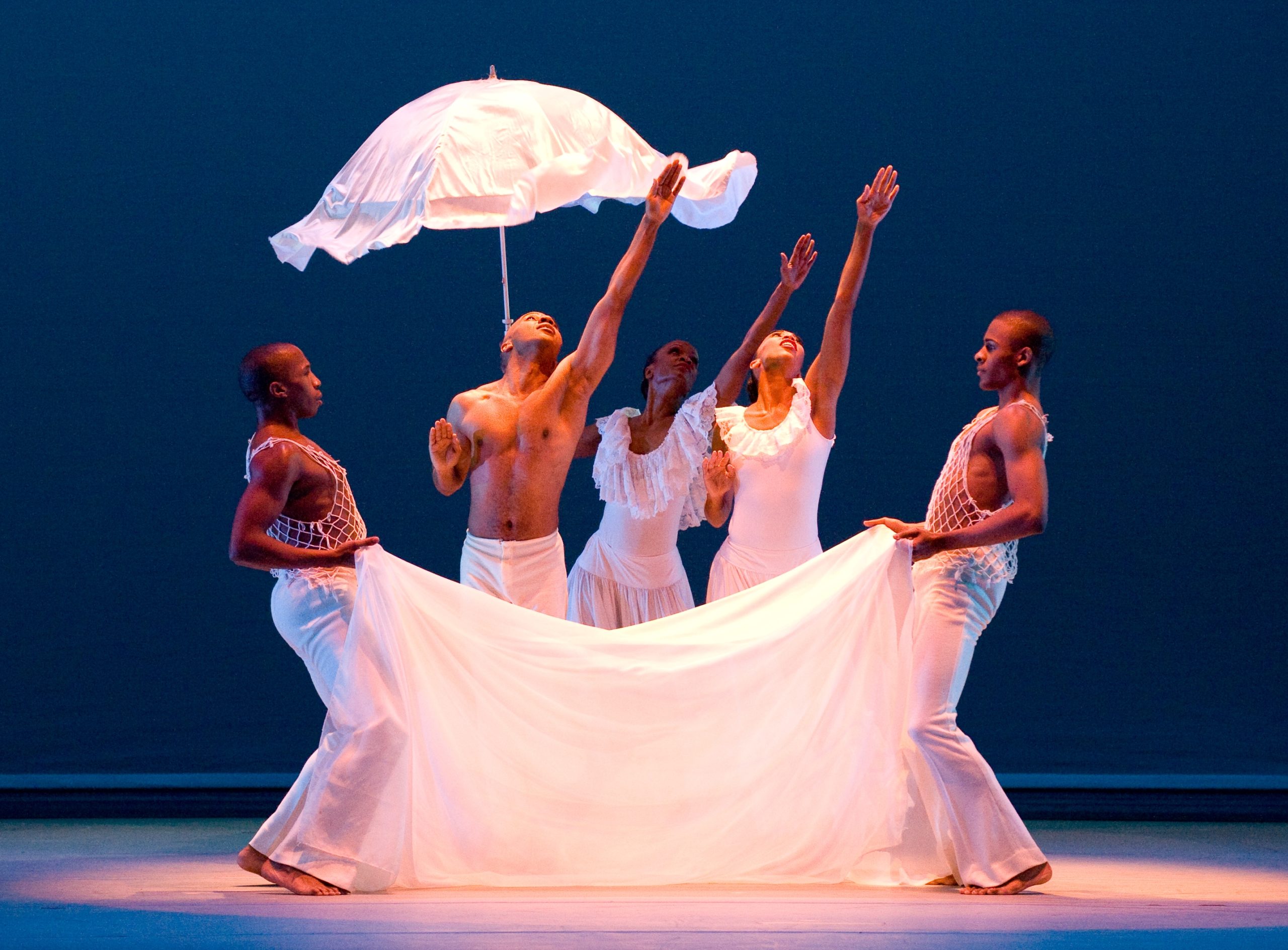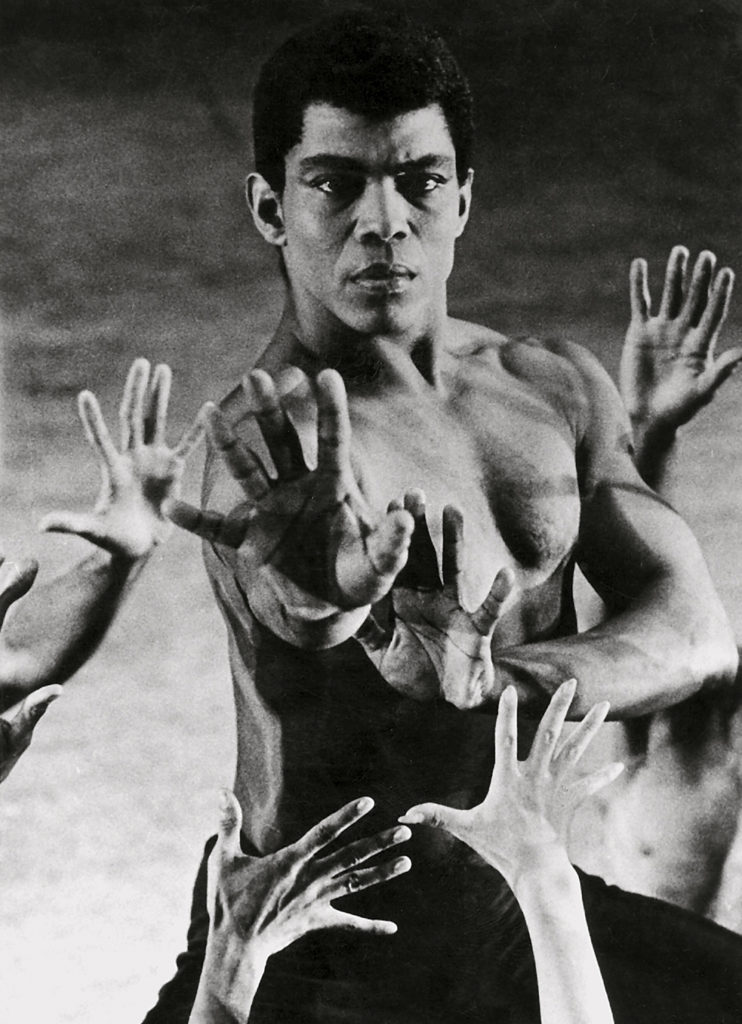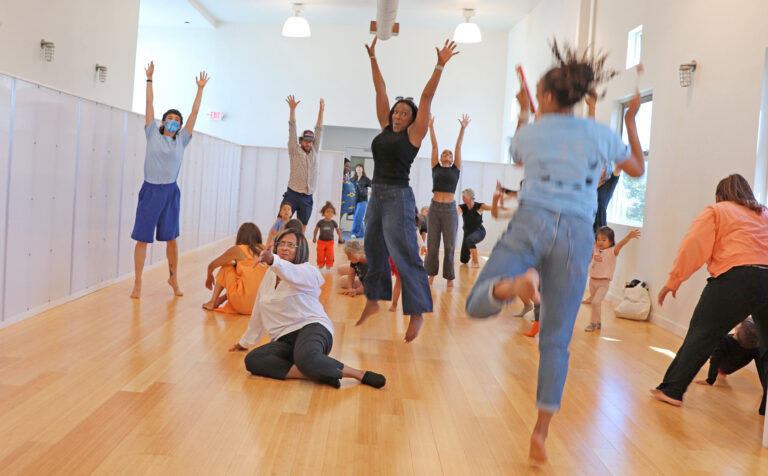
Alvin Ailey founded what would become one of the world’s most famous modern dance companies. From its earliest days, the Alvin Ailey American Dance Theater performed dances that reflected the African American cultural experience to concert dance audiences. Ailey’s iconic work Revelations continues to resonate over 60 years later. The company has performed for more than 25 million people on six continents.
Ailey was born in Rogers, Texas, during the Great Depression. At age 11, he moved to Los Angeles with his mother and began taking modern dance classes from Lester Horton, choreographer and creator of the Horton technique. In Horton’s racially integrated studio and company, Ailey developed a reputation as a strong performer with a commanding stage presence.
When Horton died in 1953, 22-year-old Ailey briefly took over the company. A year later, Ailey moved to New York City to perform in the Broadway show House of Flowers. Over the next four years, he trained with some of the biggest names in modern dance: Martha Graham, Hanya Holm, Anna Sokolow, Doris Humphrey and Charles Weidman. In 1958, Ailey created his own troupe— a modern repertory company focused on giving the Black cultural experience a voice in concert dance. The company’s first performance at the 92nd Street Y, of Ailey’s sultry Blues Suite, was an instant success with critics and audiences.

Two years later, Ailey created his choreographic masterpiece, Revelations, which the company traditionally performs every season. Audiences connected with the work’s emotional range and theatricality— qualities that would become staples of Ailey’s choreography. In 1965, at age 34, Ailey retired from performing to focus solely on choreographing and directing the company. In addition to his own work, he incorporated older master works and new commissions into the company’s repertory. Ailey dancers have performed works by Ted Shawn, Katherine Dunham, Pearl Primus, José Limón, Anna Sokolow, Talley Beatty and Donald McKayle, among others. In 1969, Ailey established a dance center in New York City. Over the next 20 years, he grew the school and the company’s international reputation. He died of AIDS-related complications in 1989 at age 58.
Style:
A student of Lester Horton, Ailey incorporated Horton technique into his choreography and The Ailey School’s curriculum. Horton technique works to lengthen the muscles and build overall strength, targeting specific areas of the body through codified exercises. Fundamentals include flat backs, hinges (a sharp bend of the knees while leaning back) and lateral Ts (a sideways position on one leg in which the body makes a “T”; the torso and arms extend in one direction and the working leg in the other). Signature Horton movements are easy to identify in AAADT’s repertory today.
The Work:
Ailey’s choreography was often emotional and narrative, drawing from a variety of dance styles and musical influences.
- Blues Suite (1958) Danced to blues songs, Ailey’s first full-scale work is set in a Southern saloon. He combined the linear style of Horton technique with social dance, ballet partnering and Jack Cole–style jazz dance in this sultry and often humorous work.
- Revelations (1960) Based on what Ailey called his “blood memories” of growing up in rural Texas, the piece captured African American cultural heritage and spirit through a series of vignettes set to spirituals. In the work’s central section, “Take Me to the Water,” a couple is baptized.
- Cry (1971) In this piece, dedicated to black women everywhere, a woman in a long white skirt expresses anguish, strength and joy through sharp gestures, suspended balances on one leg, spinal undulations and spinning. Cry was created on Judith Jamison, who performed with the company, 1965–80, and was handpicked by Ailey to succeed him as artistic director.
The Legacy Lives On:
Alvin Ailey American Dance Theater has continued to thrive long after Ailey’s death, under the direction of, first, Judith Jamison and, since 2011, Robert Battle. The Ailey organization designed and completed construction in 2004 on a permanent home for all components of the organization – The Joan Weill Center for Dance, New York’s largest building dedicated to dance. Currently, the school trains more than 3,500 dancers each year. Revelations remains the company’s choreographic crown jewel, and it holds the record for the most widely seen modern dance piece in the world.
Additional resources for your students:
Print:
- American Dance: The Complete Illustrated History by Margaret Fuhrer, Voyageur Press, 2014
- No Fixed Points: Dance in the Twentieth Century by Nancy Reynolds and Malcolm McCormick, Yale University Press, 2003
Web:
- Alvin Ailey American Dance Theater: alvinailey.org
- Dance Heritage Coalition: “America’s Irreplaceable Dance Treasures”: danceheritage.org
Video:
Alvin Ailey’s ‘Cry’
‘Revelations’ by Alvin Ailey





